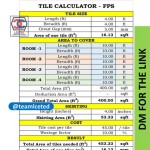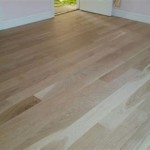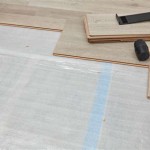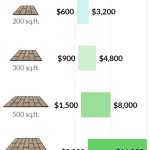Cost To Replace Wood Floor In House: A Comprehensive Guide
Replacing wood floors in a house is a significant home improvement project requiring careful planning and budgeting. The costs associated with this undertaking can vary substantially based on several factors, including the type of wood, the size of the area, the complexity of the installation, and regional labor rates. This article provides a detailed examination of the various elements that contribute to the overall cost of replacing wood floors, offering a framework for homeowners to understand and manage their expenses effectively.
One of the initial steps in determining the cost to replace wood floors involves assessing the existing flooring. Identifying the type of flooring currently in place--whether it is carpet, tile, laminate, or existing hardwood--is crucial. Removing the existing flooring adds to the overall project cost, and the complexity of the removal process will depend on the type of material and the method used to install it. For instance, removing glued-down tile or carpeting with extensive adhesive requires more labor and specialized tools compared to removing floating laminate flooring.
Type of Wood Flooring and Material Costs
The type of wood flooring selected is a primary driver of cost. Hardwood flooring options can be broadly categorized into solid hardwood and engineered hardwood, each with its own range of pricing. Solid hardwood consists of planks milled from a single piece of wood, offering durability and a classic aesthetic. Popular solid hardwood species include oak, maple, cherry, and walnut. Oak is generally one of the most affordable solid hardwood options, while more exotic species like Brazilian cherry or walnut command higher prices due to their rarity and distinctive appearance.
Engineered hardwood, on the other hand, is constructed from multiple layers of wood veneer bonded together with a core of plywood or high-density fiberboard (HDF). Engineered hardwood is generally more dimensionally stable than solid hardwood, making it a suitable choice for areas with higher moisture levels or temperature fluctuations. While engineered hardwood can sometimes be less expensive than solid hardwood, high-quality engineered options with thicker wear layers and premium veneer can approach or even exceed the cost of some solid hardwood species.
Beyond solid and engineered hardwood, other wood flooring alternatives include bamboo and cork, which offer unique aesthetics and environmental benefits. Bamboo is a rapidly renewable resource and can be a cost-effective option compared to some hardwoods. Cork flooring provides excellent sound insulation and cushioning, but it generally requires more specialized installation techniques.
Material costs for wood flooring can range from $3 to $15 or more per square foot, depending on the species, grade, and finish. Lower-grade wood may have more imperfections or variations in color and grain, while higher-grade options offer a more uniform and refined appearance. The finish applied to the wood also impacts the cost, with prefinished flooring often being more expensive than unfinished flooring that requires on-site sanding and finishing.
Furthermore, the amount of wood flooring needed to cover the area is a direct determinant of material costs. Accurate measurements of the room or rooms where the flooring will be installed are essential to avoid underestimating and having to order additional material, or overestimating and wasting resources. It is also standard practice to factor in an additional 5-10% of material for waste due to cuts and fitting around obstacles.
Labor Costs and Installation Factors
Labor costs represent a significant portion of the overall expense of replacing wood floors. Installation costs can vary based on geographic location, the complexity of the project, and the experience of the installer. Hiring a professional flooring contractor ensures a proper installation, which is crucial for the longevity and performance of the wood flooring.
Installation methods also influence labor costs. The most common methods include nail-down, glue-down, and floating installations. Nail-down installation is typically used for solid hardwood flooring and involves securing the planks to a wooden subfloor using nails or staples. Glue-down installation is often employed for engineered hardwood and involves adhering the planks directly to the subfloor with adhesive. Floating installation is a method where the planks are connected to each other and "float" above the subfloor without being directly attached.
The condition of the subfloor is an important factor in the installation process. A level and stable subfloor is essential for a successful wood flooring installation. If the subfloor is uneven, damaged, or requires repair, additional preparation work will be necessary, adding to the labor costs. This may involve patching cracks, leveling the surface with self-leveling compound, or even replacing sections of the subfloor altogether.
The complexity of the room layout also impacts labor costs. Rooms with intricate shapes, numerous corners, or obstructions like built-in cabinets require more cutting and fitting, increasing the time and effort required for installation. Additionally, installing wood flooring around features like fireplaces or staircases can add to the overall complexity and cost.
The removal and disposal of the existing flooring, as mentioned earlier, also contributes to labor costs. Depending on the type of flooring and the condition of the subfloor, this process can be labor-intensive. Some contractors include removal and disposal in their overall installation quote, while others charge a separate fee.
Labor costs for wood floor installation typically range from $3 to $8 or more per square foot. This range can vary based on the factors described above, as well as the prevailing labor rates in the area. Obtaining multiple quotes from different contractors is essential to compare pricing and ensure a competitive rate.
Additional Costs and Considerations
Beyond the material and labor costs, there are several additional expenses to consider when replacing wood floors. These costs can include the purchase of underlayment, moldings and trim, and the cost of moving and storing furniture.
Underlayment is a layer of material installed between the subfloor and the wood flooring. It provides cushioning, sound insulation, and moisture protection. The type of underlayment required depends on the type of wood flooring being installed and the condition of the subfloor. Some wood flooring products have a built-in underlayment, while others require a separate underlayment layer. The cost of underlayment can range from $0.50 to $2 or more per square foot.
Moldings and trim are used to cover gaps between the wood flooring and walls, doorways, and other surfaces. Common types of moldings include baseboards, quarter round, and shoe molding. These moldings are typically made of wood or MDF (medium-density fiberboard) and can be prefinished or unfinished. The cost of moldings and trim depends on the material, style, and length required. It is advisable to factor in an additional allowance for wastage.
Moving furniture out of the room or rooms where the flooring will be installed is necessary to provide access for the installation process. This can be a time-consuming task, and some homeowners may opt to hire professional movers to handle this. The cost of moving furniture depends on the size and weight of the items, as well as the distance they need to be moved. Alternatively, furniture can be moved to another room or covered with protective sheeting to prevent damage during the installation process.
Another important consideration is the potential for unforeseen costs that may arise during the project. These costs can include unexpected repairs to the subfloor, the discovery of asbestos or other hazardous materials, or changes to the scope of the project. Setting aside a contingency fund of 5-10% of the total project cost is a prudent measure to cover any unforeseen expenses.
Maintaining the wood flooring after installation also involves additional costs. These costs include purchasing suitable cleaning products, applying protective finishes or sealants, and performing regular maintenance to prevent damage and prolong the life of the flooring. Understanding these long-term maintenance requirements is essential for budgeting purposes.
Finally, consider the value that new wood flooring adds to the home. While there is an upfront cost to wood floor replacement, it is a home improvement that can increase the home's value and appeal to potential buyers. This can be a factor in determining which options to choose and how to approach the project.

How Much Does Flooring Installation Cost 2025

How Much Does Flooring Installation Cost 2025

How Much Does Hardwood Flooring Installation Cost 2025 Data Angi

Flooring Installation Cost Guide 2025 Average S By Type

How Much Does Flooring Installation Cost 2025
How Much Hardwood Flooring Costs And To Save

Cost To Install Hardwood Floors The Home Depot
Is It Er To Sand And Refinish Hardwood Floors Or Replace Them

2025 Hardwood Floor Refinishing Cost Sand Stain Redo

How Much Does Hardwood Floor Repair Cost 2025 Data Angi
Related Posts








